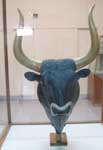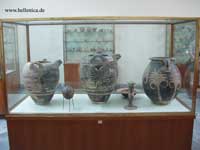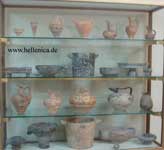.
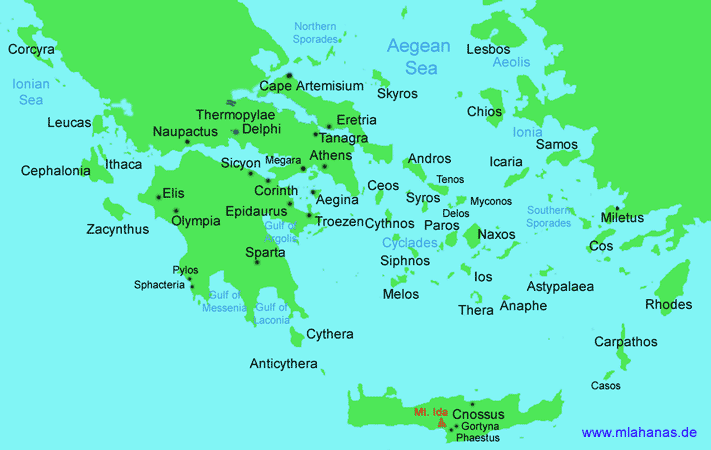
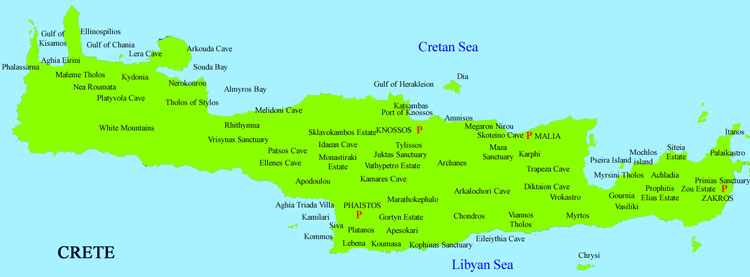
The Minoans were a pre-Hellenic Bronze Age civilization in Crete in the Aegean Sea, prior to Helladic or Mycenaean culture. Their name was coined by the British archaeologist Sir Arthur Evans after the mythic "king" Minos, associated with the labyrinth, which Evans identified as the site at Knossos. It is possible, though unsure, that the Minos was a term for a Minoan ruler. What the Minoans called themselves is unknown.
The Minoans were primarily a mercantilist people engaged in overseas trade. Their culture, from ca 1700 BC onwards, shows a high degree of organization, without a trace of the military aristocracies that have characterized the civilizations that followed. Many historians and archaeologists believe that the Minoans were involved in the Bronze Age's important tin trade: tin, alloyed with copper apparently from Cyprus, was used in the manufacture of bronze. The decline of Minoan civilization and the decline in use of bronze tools in favor of harder iron ones seem to be correlated. The Minoan trade in saffron, which originated in the Aegean basin as a natural chromosome mutation, has left fewer material remains: a fresco of saffron-gatherers at Santorini is well-known. This inherited trade pre-dated Minoan civilization: a sense of its rewards may be gained by comparing its value to frankincense, or later, to pepper.
The (undeciphered) language of the Minoans is referred to as Eteocretan, which may have been written in the also-undeciphered Linear A script.
Geography and climate
Crete is a mountainous island with natural harbors. There are signs of earthquake damage at Minoan sites.
Homer recorded a tradition that Crete had 90 cities. The site at Knossos was the most important one. Archeologists have found palaces in Phaistos and Malia as well. The island was probably divided into four political units, the north being governed from Knossos, the south from Phaistos, the central eastern part from Malia and the eastern tip from Kato Zakros. Smaller palaces have been found in other places. It is remarkable that none of the Minoan cities had city walls, and few weapons were found.
Periods of Minoan history:
7000 BC first settlement
3100 BC-2100 BC Early Minoan period
2100 BC-1700 BC Middle Minoan period = Old Palace Age
1700 BC-1420 BC Late Minoan period = Young Palace Age
1420 BC-1050 BC Mycenaean period
Chronological history
The oldest signs of inhabitants on Crete are ceramic Neolithic remains that date to approximately 7000 BC. See History of Crete for details.
The beginning of the Bronze Age, around 3100 BC, was a period of great unrest in Crete, but it also marks the beginning of Crete as an important center of civilization.
Around 1700 BC there was a large disturbance in Crete, probably an earthquake, although an invasion from Turkey has also been suggested. After that, population increased again, and the palaces were even larger than before but with a different basic plan.
Around 1650 BC, 1628 BC, 1500 BC, or 1450 BC (still debated), the volcanic island Thera (Santorini), at about 70 km distance, erupted. The volcanic eruption and fallout was quite possibly larger than the Tambora eruption of 1815, the largest historical eruption on record. The eruption has been identified by ash fallout in eastern Crete, Egypt, and cores from the Aegean and Eastern Mediterranean seas. The postulated sulfur dioxide and ash clouds emitted by the volcano are thought to have destroyed some settlements and resulted in volcanic winters and poor harvests for several years. The massive eruption of Thera also led to the volcano's collapse, causing massive tsunamis which destroyed naval installations and settlements near the coasts. Some archeologists believe the Minoans may have lost their religious faith in the ability of the priests to control nature, and possibly (though unconfirmed) led to the fall of the Minoan civilization.
Around 1450 BC, the palaces were again disturbed. Some time later, around 1420 BC, the island was conquered by the Mycenaeans, who adapted Minoan script for their own proto-Greek language. After this, most Cretan cities and palaces went into decline; Knossos remained until 1200 BC.
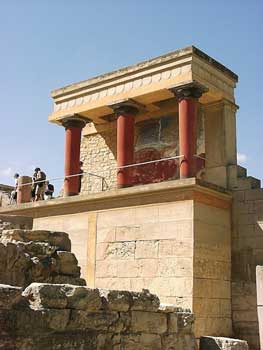
Knossos
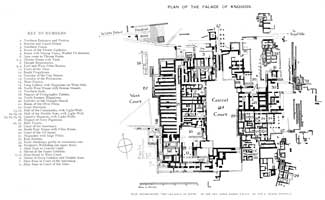
Theories of failure
There is evidence that the trade networks collapsed, and that Minoan cities perished by famine. The Minoans' grain supply is believed to have come from farms on the shore of the Black Sea.
Many scholars believe that ancient trading empires were in constant danger from uneconomic trade, that is, food and staple goods were improperly valued relative to luxury goods, because accounting was undeveloped. The result could be famine and decline in population.
One theory of Minoan collapse is that increasing use of iron tools impoverished the Minoan traders. When the trade networks ceased, regional famines could no longer be mitigated by trade.
Another theory is that Minoan naval capabilities were damaged in some fashion by the explosion of Thera. This may have led to a conquest by the Myceneans. The Myceneans probably lacked the skills to manage a large trading empire.
The impact of the Thera eruption on the Minoan civilization is still controversial. Since the Minoan eruption is one of the largest on record, archaeologists and geologists have been arguing over why there is such a big gap between the radiocarbon date of the eruption (1628 BC by bristlecone pines and 1645 BC by the Greenland ice sheets) and the date of the fall of the Minoans (c. 1450 BC). This leads geologists and archaeologist to draw one of three conclusions:
The Thera eruption had no lasting impact on the Minoan civilization.
The Thera eruption ended the Minoan civilization but the radiocarbon date is wrong.
The Thera eruption ended the Minoan civilization but the archaeological date is wrong.

Agriculture
The Minoans raised cattle, sheep, pigs, goats, and grew wheat, barley, vetch, chickpeas, figs, olives, lemons, oranges and grapes. Farmers used wooden plows, bound by leather to wooden handles, and pulled by pairs of donkeys or oxen.
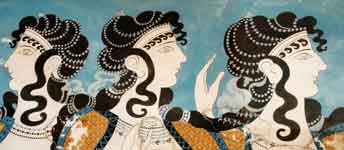
Palaces
The first palaces were constructed at the end of the Early Minoan period in the third millenum BC (Malia). While it was formerly believed that the foundation of the first palaces was synchronous and dated to the Middle Minoan at around 2000 BC (the date of the first palace at Knossos), scholars now think that palaces were built over a wider period of time in different locations, in response to local developments. The main older palaces are Knossos, Malia and Phaistos.
The palaces fulfilled a plethora of functions: they served as centres of government, administrative offices, shrines, workshops and stores, although it should be kept in mind that these distinction would probably have seemed entirely artificial to the Minoans.
The use of the term 'palace' for the older palaces has recently come under criticism, under the impression that implies a royal dynastic residence (see Palace), and the term 'court buildings' proposed instead, but the original term is probably too well entrenched to be replaced. Architectural features like ashlar masonry, orthostats, columns, open courts, staircases implying upper stories and the presence of diverse basins have been used to define palatial architecture. Often the better known younger palaces have been used to reconstruct the older ones, but this may have hid fundamental functional differences. Most older palaces had only one story and no representative facades. They were generally smaller than the later palaces, but with a big central court. The plan was U-shaped.
The late palaces are characterised by multi-story buildings. The west facades had sandstone ashlar masonry. Knossos is the best-known example.
Knossos mural, the so called 'Prince with the Lilies' or 'Priest King' Fresco (Knossos, c. 1500 BC) .
Art
The great collection of Minoan art is in the museum at Heraklion, near Knossos on the north shore of Crete. Minoan art, with other remains of material culture especially the sequence of ceramic styles, has defined the three phases of Minoan culture defined by archaeologists, each phase with its defining character.
The first, Early Minoan phase (EMI, EMII and EMIII) rose out of local Neolithic culture about 2500 BC and last until about 2300 BC. The Middle Minoan culture (MMI, MMII and MMIII) lasted from about 2150 to 1700. The Late Minoan phase is also subdivided in three; its last phase (LMIII) is divided at ca 1370 by the catastrophe that overtook the palace of Knossos, 1370 BC. The traditional dating of the War of Troy falls in this last phase
Since wood and textiles have vanished, the most important surviving Minoan art is in ceramics, architecture with its frescos that include landscapes, and stone carvings. In the Early Minoan period ceramics were characterised by linear patterns of spirals, triangles, curved lines, crosses, fishbone motifs and such. In the Middle Minoan period naturalistic designs such fish, squid, birds and lilies were common. In the Late Minoan period, flowers and animals were still the most characteristic, but the variability had increased. The 'palace style' of the region around Knossos is characterised by strong geometric simplification of naturalistic shapes and monochromatic painting. Very noteworthy are the similarities between Minoan and Mycenaean art.
Culture
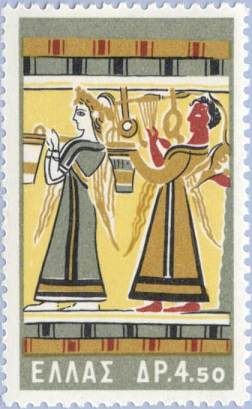
Minoan men wore loincloths and kilts. Women wore robes that were slit to the navel and had short sleeves and flounced skirts. The patterns on clothes emphasized symmetrical geometric designs.
The statues of priestesses in Minoan culture and frescoes showing men and women participating in the same sports (usually bull-leaping) lead some archaeologists to believe that men and women held equal social status, and that inheritance might even have been matrilineal.

Language and writing
The Minoans had their own language now being called Eteocretan, though little is known about it. It was written in a number of different scripts over the centuries. Approximately 3,000 tablets bearing writing have been discovered so far, many apparently being inventories of goods or resources. Between around 1900-1700 BC, hieroglyphics were used by the Minoans; this was succeeded by the Linear A script (1700-1450 BC), and Linear B (1450-1400 BC). The latter was a very archaic version of the Greek language and was successfully deciphered by Michael Ventris in the 1950s, but the earlier scripts remain a mystery.
Religion
Walter Burkert warns "To what extent one can and must differentiate between Minoan and Mycenaean religion is a question which has not yet found a conclusive answer." (Burkert 1985 p 21) and suggests that useful parallels will prove to be found in the relations between Etruscan and Archaic Greek culture and religion, or Roman and Hellenistic. Minoan religion has not been transmitted in its own language, and the uses literate Greeks later made of surviving Cretan mythemes, after centuries of purely oral transmission, have transformed the meager sources: consider the point-of-view of the Theseus legend. A few Cretan names are preserved in Greek mythology, but there is no way to connect a name with an existing Minoan icon, such as the familiar serpent-goddess. Retrieval of metal and clay votive figures— double axes, miniature vessels, models of artifacts, animals, human figures—has identified sites of cult: here were numerous small shrines in Minoan Crete, and mountain peaks and very numerous sacred caves— over 300 have been explored (Kerenyi 1976 p 18; Burkert 1985 p 24f)— were the centers for some cult, but temples as the Greeks developed them were unknown (Burkert 1985). Within the palace complex, no central rooms devoted to cult have been recognized, other than the center court where youths of both sexes would practice the bull-leaping ritual.
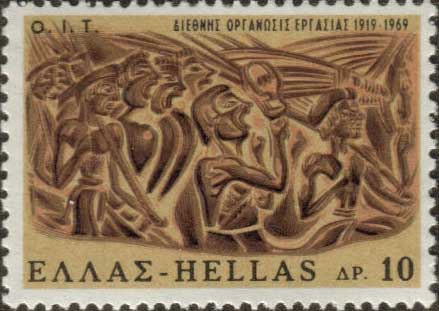
Scene from a Minoan Vase, Agia Triada (The harvester vase).
Minoan sacred symbols include the bull and its horns of consecration, the labrys (double-headed axe), the pillar, the serpent, the sun-disk, and the tree.
Minoan art suggests that the Minoans may have worshipped a Mother Goddess of fertility, a Mistress of the Animals, a protectress of cities, the household, the harvest, and the underworld. She was often represented by serpents. The Goddess was linked to the "Earthshaker", a male represented by the bull and the sun, who would die each autumn and be reborn each spring. Other illustrations have led to some theories that the Minoans also believed in animal-headed demons.
Although long thought to be a peaceful people, recent evidence uncovered at a temple structure near one of the palaces shows that the Minoans engaged in human sacrifice. To date, however, only one such archaeological find has been made.
Minoans buried their dead in pottery jars.
Technology
The Minoan cities were connected with stone-paved roads, formed from blocks cut with bronze saws. Streets were drained and water and sewage facilities were available to the upper class, through clay pipes.
Minoan buildings often had flat tiled roofs; plaster, wood, or flagstone floors, and stood 2-3 stories high. They would construct the lower walls of stone and rubble and use mudbrick for higher elevations. Ceiling timbers would hold up the roofs.
Trade
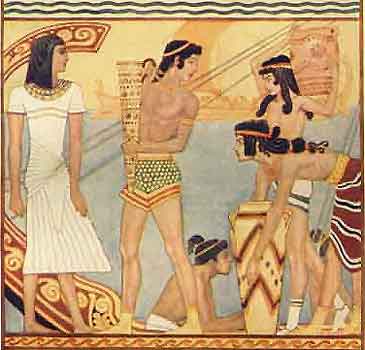
Minoan Traders in Egypt

Men from Keftiu (maybe Minoans or Mycenaeans with gifts?)
The Minoans traded with mainland Greece, Cyprus, Syria, Anatolia, Egypt, Spain, and Mesopotamia. Their most important (re)exports were ceramics, copper, tin, gold, and silver.
Archeological Sites
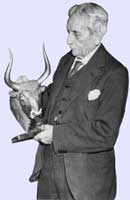
Sir Arthur Evans (1851-1941)
Knossos - palace; the largest Bronze Age archaeological site on Crete. This site was purchased for excavations by Sir Arthur Evans on March 16, 1900.

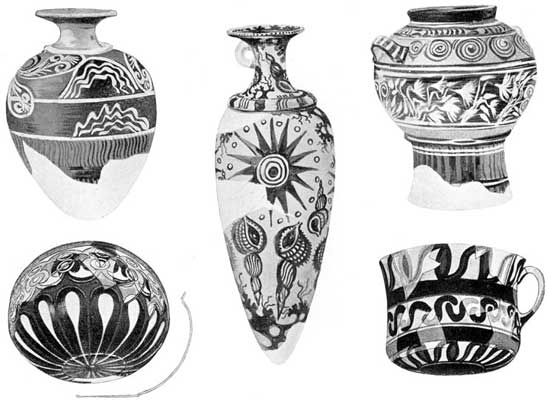
Minoan Pottery
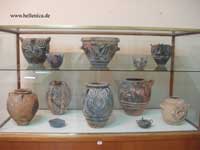 |
||
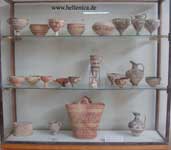 |
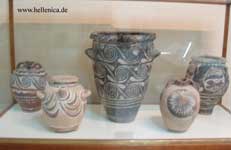 |
Iraklion Archaeological Museum
Cick image to enlarge
Reconstructed Minoan Fresco from Avaris, Egypt.
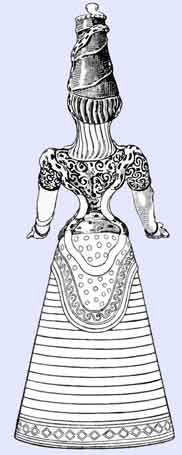
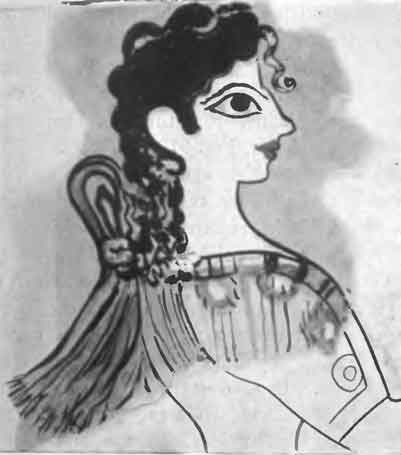
Snake Goddess, Woman with a sacral knot, "known also as "Parisiana" the girl from Paris / France"

Sources
- I. Schoep, 2004. "Assessing the role of architecture in conspicuous consumption in the Middle Minoan I-II Periods". Oxford Journal of Archaeology vol 23/3, pp, 243-269
- Spyridon Marinatos, 1960. Crete and Mycenae (originally published in Greek, 1959), photographs by Max Hirmer.
- Reynold Higgins, 1981. Minoan and Mycenaean Art, (revised edition). *Spyridon Marinatos, 1972. "Life and Art in Prehistoric Thera," in Proceedings of the British Academy, vol 57.
- Sir Arthur Evans, 1921-35. The Palace of Minos: A Comparative Account of the Successive Stages of the Early Cretan Civilization as Illustrated by the Discoveries at Knossos, 4 vols. in 6 (reissued 1964). The classic work has partly been superseded.
- Richard W. Hutchinson, 1962. Prehistoric Crete (reprinted 1968)
- Sinclair Hood, 1971. The Minoans: The Story of Bronze Age Crete
- Keith Branigan, 1970. The Foundations of Palatial Crete.
Iraklion Archaeological Museum
The Minoan Agia Triada Sarcophagus Fresco
Santorini: Wall Paintings and the 600 Megaton explosion that destroyed a Paradise ,
| Ancient Greece
Science, Technology , Medicine , Warfare, , Biographies , Life , Cities/Places/Maps , Arts , Literature , Philosophy ,Olympics, Mythology , History , Images Medieval Greece / Byzantine Empire Science, Technology, Arts, , Warfare , Literature, Biographies, Icons, History Modern Greece Cities, Islands, Regions, Fauna/Flora ,Biographies , History , Warfare, Science/Technology, Literature, Music , Arts , Film/Actors , Sport , Fashion --- |
Retrieved from "http://en.wikipedia.org"
All text is available under the terms of the GNU Free Documentation License

